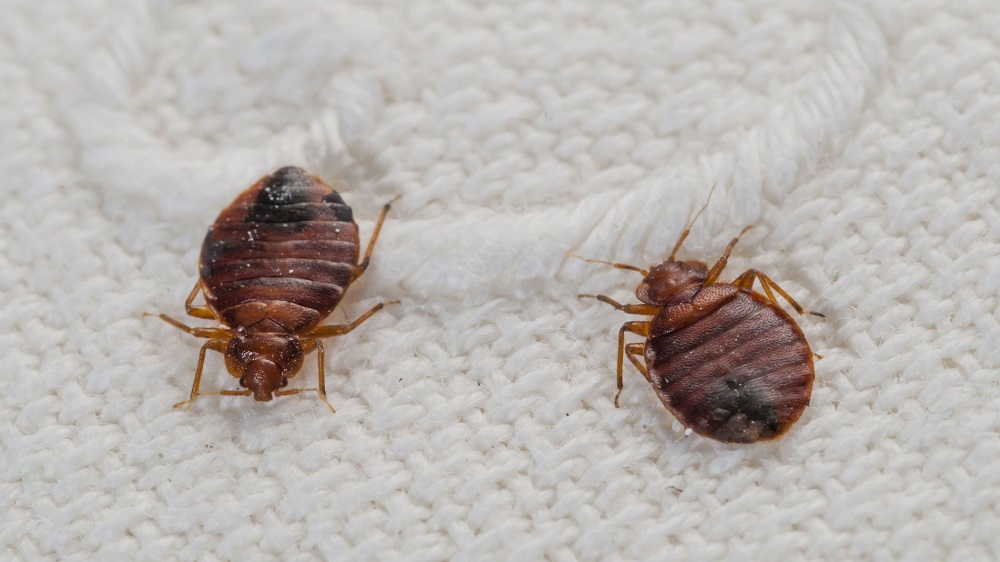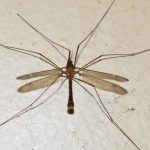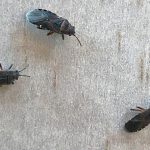Have you ever woken up to find your body covered in itchy, red bites and wondered what could have caused them? If so, you may be dealing with the dreaded bed bug infestation. These tiny pests are notorious for causing frustration and discomfort, but getting rid of them is no easy feat.
So, how long does it take to get rid of bed bugs? Unfortunately, there’s no one-size-fits-all answer. The duration of treatment depends on several factors, such as the severity of the infestation, the type of treatment used, and how thoroughly it’s carried out.
Bed bugs can be sneaky little creatures that are difficult to detect. But once they’ve been identified, swift action is necessary to prevent a full-blown infestation. There are various methods for eradicating bed bugs – from chemical treatments to heat treatments and vacuuming – but often a combination of these strategies is most effective over a period of several weeks.
In this post, we’ll dive into the nitty-gritty details of how long it takes to get rid of bed bugs and what factors impact each method’s success rate.
We’ll provide you with all the information you need to choose the best treatment approach for your specific situation. Plus, we’ll also share some preventative measures that will help you avoid a re-infestation down the road.
Let’s get started.
Factors Affecting the Length of Time Needed to Get Rid of Bed Bugs
Contents
- 1 Factors Affecting the Length of Time Needed to Get Rid of Bed Bugs
- 2 Step One: Identifying Infested Areas
- 3 Treatment Options for Bed Bugs
- 4 Heat Treatments for Bed Bug Eradication
- 5 Chemical Treatments for Bed Bug Eradication
- 6 Repeated Treatments, Monitoring, and Inspection Necessary for Complete Eradication
- 7 Conclusion
The thought of bed bugs in your home may send shivers down your spine, and rightfully so. Bed bug infestations can be challenging to eliminate entirely, and the time needed to do so depends on several factors.
The severity of the infestation is a crucial factor that affects the length of time needed to eradicate bed bugs. Catching an infestation early on makes it easier to treat and can take just a few weeks to eliminate bed bugs.
However, if the infestation has spread throughout your property, it may take several months to eliminate them entirely. Bed bugs reproduce quickly, so early detection and prompt treatment are essential.
Another significant factor is the size of your property. Larger properties require more time and effort to treat than smaller ones. It’s vital to note that bed bugs can move from one room to another, so treating all rooms in your property is necessary.
The treatment method used is also a crucial factor that affects the length of time needed to eliminate bed bugs.
Heat treatment is one of the most effective methods used as it penetrates every area where bed bugs hide. Chemical treatments can also be effective, but they may take longer to work than heat treatments.
It’s important to note that treatment methods may need repeating several times over weeks or months to ensure complete eradication of bed bugs. Regular monitoring and inspection of treated areas are also necessary to detect any new infestations.
In conclusion, eliminating bed bugs requires patience and persistence. Seeking professional help from pest control experts for effective and safe treatment options is recommended.
By understanding the factors that affect the length of time needed to eradicate bed bugs, you can make informed decisions and successfully eliminate these pesky pests from your property.
Step One: Identifying Infested Areas
You may have a bed bug infestation. Don’t panic, because the first step in getting rid of these pesky critters is identifying infested areas. In this section of our guide, we’ll take you through the process of identifying bed bug infestations.
Bed bugs are experts at hiding in cracks and crevices, and they prefer areas where people spend a lot of time like bedrooms, living rooms, and even offices. They can be found in mattresses, box springs, bed frames, and headboards, but they can also hide in other areas such as baseboards, picture frames, and electrical outlets.
To identify infested areas, it’s important to conduct a thorough inspection of all potential hiding places.
Check seams and folds of mattresses and box springs, inspect furniture and baseboards for any signs of bed bugs or their fecal matter, and examine any other potential hiding places. Vigilance is key in detecting these sneaky pests.
It’s essential to keep in mind that not all bites or skin irritations are caused by bed bugs. Other insects like fleas or mosquitoes can also cause similar symptoms. Therefore, it’s important to confirm the presence of bed bugs before proceeding with treatment.
Once you’ve identified infested areas, it’s vital to take immediate action to prevent further spread of the infestation. This may involve isolating infested items by sealing them in plastic bags until they can be properly treated or disposed of. Remember that every action counts when it comes to getting rid of bed bugs.
In conclusion, identifying infested areas is the first step in getting rid of bed bugs. It requires a thorough inspection of potential hiding places and confirmation of the presence of bed bugs before proceeding with treatment. Taking immediate action can prevent further spread of the infestation and increase the chances of successful treatment.
Treatment Options for Bed Bugs
If you’re reading this, chances are you’re dealing with an annoying bed bug infestation. But fret not, we’ve got you covered. In this post, we’ll delve into the different treatment options available for bed bugs, ensuring you can sleep soundly knowing that your problem will soon be history.
Let’s start by discussing mild cases. If you catch bed bugs early on, simple cleaning and vacuuming may suffice in eliminating the problem. However, for more severe cases, professional treatment may be necessary.
One popular option for treating bed bugs is heat treatment. This method involves using high temperatures to kill the bugs and their eggs. Specialized equipment or professional pest control companies can carry out heat treatments that typically take several hours. The best part about heat treatments is that they are effective without using any harmful chemicals, making them a safer option for those with allergies or sensitivities.
Another common option is chemical treatment. There are various insecticides that can be used to kill bed bugs, including sprays, dusts, and foggers. It’s crucial to follow the instructions carefully and use appropriate protective gear when using these chemicals. Chemical treatments can be effective but require multiple applications and may not eradicate every single bug.
In some cases, a combination of heat and chemical treatments may be employed to ensure complete elimination of the infestation.
Regardless of which treatment method is chosen, it’s important to declutter and remove excess items from the home as bed bugs can hide in these areas. Regular cleaning and maintenance can also help prevent future infestations.
Remember – every action counts when it comes to getting rid of these pesky pests. So don’t hesitate to take action if you suspect a bed bug infestation. Whether you choose heat treatment, chemical treatment, or a combination of both, relief is within reach.
Heat Treatments for Bed Bug Eradication
Fear not, as heat treatments are here to save the day. These treatments are highly effective in eradicating bed bugs, as they simply cannot withstand high temperatures. In this blog post, we’ll explore the duration of a heat treatment and the equipment used to get rid of these pesky pests.
The duration of a heat treatment can vary depending on the size of the infested area and the equipment used. For professional heat treatments, it typically takes between 6 to 8 hours to complete.
DIY treatments can take several hours or more, depending on the method used. Regardless of the approach, it’s crucial that the temperature is kept at a constant level throughout the process to ensure that all bed bugs and their eggs are exterminated.
Professional heat treatments are typically done using specialized equipment such as heaters and fans that are designed to raise the temperature of the infested area quickly and efficiently.
The equipment used will depend on the size of the infested area, but larger areas will require more powerful equipment. These specialized heaters and fans work together to create an environment where bed bugs cannot survive, leaving your home bed bug-free.
For smaller infestations, DIY heat treatments can also be effective. These treatments can be done using household items such as a clothes dryer or a hairdryer.
To use a clothes dryer, simply place infested items in the dryer on high heat for at least 30 minutes. Alternatively, direct hot air from a hairdryer onto any areas where bed bugs are present for several minutes.
In summary, heat treatments are an effective way to get rid of bed bugs, regardless of whether you opt for professional help or a DIY approach.
The duration of a heat treatment can vary depending on the size of the infested area and the equipment used, but with consistency and persistence, you’ll soon be able to enjoy peaceful nights once again.
Chemical Treatments for Bed Bug Eradication
Bed bug infestations can be a nightmare, but chemical treatments can be an effective solution for getting rid of these pesky pests.
However, not all chemical treatments will work as bed bugs have developed resistance to many pesticides. Therefore, it’s crucial to choose the right type of pesticide and follow instructions carefully.
Chemical treatments come in different forms, including sprays, dusts, and fumigation. Sprays are ideal for surfaces like mattresses, box springs, and bed frames, while dusts are applied in cracks and crevices where bed bugs may be hiding. Fumigation involves sealing off a room or area and using gas to kill the bed bugs.
The time it takes for chemical treatments to work can vary depending on several factors, such as the severity of the infestation and the type of pesticide used. While some pesticides may take weeks to eradicate bed bugs, others work more quickly.
To ensure safety and effectiveness when using chemical treatments, it’s important to follow all instructions carefully.
This includes wearing protective gear like gloves and a mask, ventilating the treated area correctly and avoiding contact with treated surfaces until they have dried completely.
It’s worth noting that other methods such as vacuuming, heat treatments, diatomaceous earth or steam cleaning may need to be used alongside chemical treatments for best results.
Chemical treatments alone may not always be enough to eradicate bed bug infestations entirely.
In conclusion, chemical treatments can be an effective method for eradicating bed bugs if done correctly. By selecting the right pesticide and carefully following instructions, you can get rid of these pests once and for all.
Repeated Treatments, Monitoring, and Inspection Necessary for Complete Eradication
Bed bugs are an unwelcome nuisance that can turn into a nightmare if not handled correctly. Eliminating these pests requires more than just one treatment. Repeated treatments, monitoring, and inspections are necessary for complete eradication of bed bugs.
Bed bugs are notorious for their resilience, as they can survive for months without feeding. This means that even if you think you’ve eliminated them all, there could still be some hiding out in your home.
To fully get rid of bed bugs, you’ll need to use a combination of treatments, including pesticides, heat treatments, and/or freezing. These treatments need to be repeated multiple times to ensure that all stages of the bed bug life cycle are targeted.
But even after all these treatments are completed, it’s important to continue monitoring for any signs of bed bugs.
Regular inspections are crucial to catching any new infestations early on. This means checking your bedding, furniture, and other areas where bed bugs like to hide. Don’t forget to inspect any new items that enter your home as well.
If you do find signs of bed bugs during an inspection, follow-up treatments will be necessary. This is because bed bugs go through different stages of their life cycle, including eggs, nymphs, and adults. Each stage requires a different treatment approach.
It’s important to work with a professional pest control company to develop a tailored treatment plan that is specific to your situation. They will guide you through each step of the process and ensure that all treatments are carried out effectively.
Getting rid of bed bugs is a frustrating process that requires patience and perseverance. However, by being diligent with repeated treatments, monitoring, and inspections, you can completely eradicate these pests from your home.
Conclusion
In conclusion, the battle against bed bugs can be a daunting one. But fear not, as there are various methods available to eradicate these pesky pests.
However, it’s important to note that there is no one-size-fits-all answer to the question of how long it takes to get rid of bed bugs.
The duration of treatment depends on several factors, such as the severity of the infestation, the size of the property, and the type of treatment used.
Early detection and prompt treatment are key to eliminating bed bugs entirely. Heat treatments and chemical treatments are two effective methods for eradicating bed bugs.
Heat treatments can be done professionally or using DIY methods and are highly effective in killing off these bloodsuckers. Chemical treatments also work well but require careful selection of pesticides and protective gear when applying them.
It’s crucial to note that repeated treatments, monitoring, and inspections are necessary for complete eradication of bed bugs.
These resilient creatures can survive for months without feeding, so regular inspections are crucial to catching any new infestations early on.
In summary, getting rid of bed bugs requires patience and persistence. Seeking professional help from pest control experts for effective and safe treatment options is recommended.






